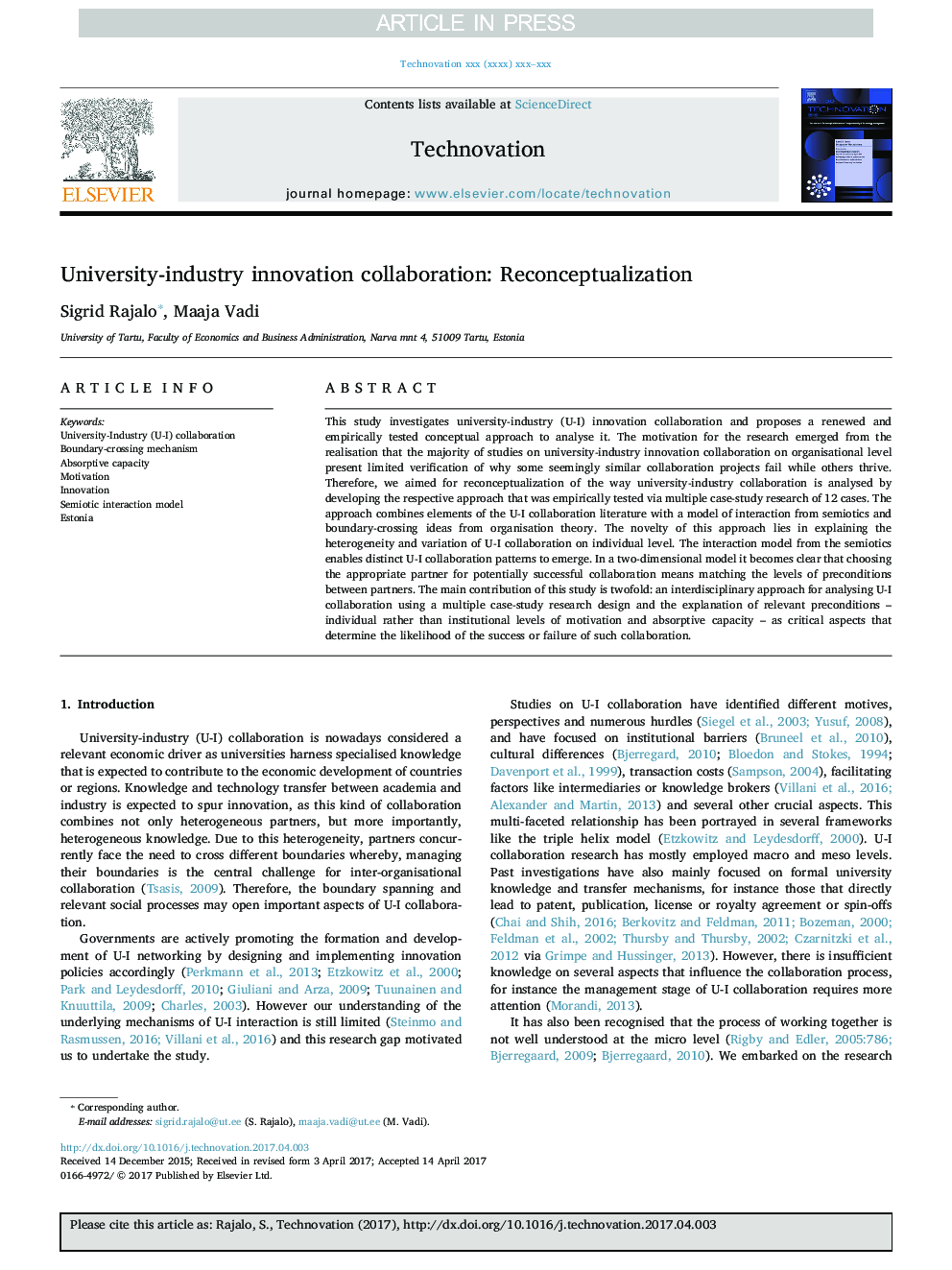| Article ID | Journal | Published Year | Pages | File Type |
|---|---|---|---|---|
| 5110346 | Technovation | 2017 | 13 Pages |
Abstract
This study investigates university-industry (U-I) innovation collaboration and proposes a renewed and empirically tested conceptual approach to analyse it. The motivation for the research emerged from the realisation that the majority of studies on university-industry innovation collaboration on organisational level present limited verification of why some seemingly similar collaboration projects fail while others thrive. Therefore, we aimed for reconceptualization of the way university-industry collaboration is analysed by developing the respective approach that was empirically tested via multiple case-study research of 12 cases. The approach combines elements of the U-I collaboration literature with a model of interaction from semiotics and boundary-crossing ideas from organisation theory. The novelty of this approach lies in explaining the heterogeneity and variation of U-I collaboration on individual level. The interaction model from the semiotics enables distinct U-I collaboration patterns to emerge. In a two-dimensional model it becomes clear that choosing the appropriate partner for potentially successful collaboration means matching the levels of preconditions between partners. The main contribution of this study is twofold: an interdisciplinary approach for analysing U-I collaboration using a multiple case-study research design and the explanation of relevant preconditions - individual rather than institutional levels of motivation and absorptive capacity - as critical aspects that determine the likelihood of the success or failure of such collaboration.
Related Topics
Social Sciences and Humanities
Business, Management and Accounting
Business and International Management
Authors
Sigrid Rajalo, Maaja Vadi,
